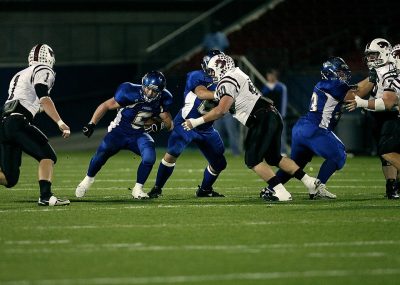Utah Second Impact Syndrome (SIS)
 Second impact syndrome (SIS) is a condition in which the brain swells rapidly and catastrophically. This normally occurs after a person suffers a second concussion and before symptoms from an earlier concussion have subsided. Many times when second impact syndrome occurs it is considered very extreme with a high rate of mortality or disability. Although it can be diagnosed by physicians, many doctors question the validity of the disease since it is quite rare and seems to only occur in young people. Most articles on SIS also suggest that the main target for this injury is athletes who have returned to their game too soon. The following attempts to describe the problems with a second impact syndrome diagnosis, symptoms, and prevention of SIS.
Second impact syndrome (SIS) is a condition in which the brain swells rapidly and catastrophically. This normally occurs after a person suffers a second concussion and before symptoms from an earlier concussion have subsided. Many times when second impact syndrome occurs it is considered very extreme with a high rate of mortality or disability. Although it can be diagnosed by physicians, many doctors question the validity of the disease since it is quite rare and seems to only occur in young people. Most articles on SIS also suggest that the main target for this injury is athletes who have returned to their game too soon. The following attempts to describe the problems with a second impact syndrome diagnosis, symptoms, and prevention of SIS.
Table of Contents
Problems with SIS Diagnosis
Second impact syndrome is an incredibly rare disorder. A study on SIS by the National Center for Catastrophic Sports Injury Research in Chapel Hill, NC found that from 1980-1993 there were only 35 probable cases in American football players. It is disputable about how many actual cases there are since the diagnosis is so uncommon doctor’s rarely think of it before it is too late. Subsequently, because the disorder is so rare it is questionable if the diagnosis can stand apart by itself or if the complications are simply from undiagnosed symptoms in the first concussion. Many doctor’s argue that the symptoms of cases such as the 35 discussed in that study, all share coincidences in their accidents rather than a new prognosis. Because the disorder is so rare, it is difficult to find or study any type of cure since the morality rate is so high.
Symptoms of SIS
Symptoms such as massive head aches, changes in eyesight, or severe cognitive disorders above that of a regular concussion usually lead suggest SIS. The first concussion must be quite rough, such as a possible cerebral contusion; followed by any smaller bump to the head or chest that could jerk the neck. Loss of consciousness from the second injury is common, but does not have to occur for a second impact injury to occur. In fact, many athletes have been able to continue to play a game and walk off the field, with extreme symptoms such as passing out or respiratory failure following soon after. Of the few cases reported, the brain stem of the patient has failed two to five minutes after impact.
Prevention of SIS
Because SIS has the highest occurrence among athletes, many health care professionals have started encouraging sports at all levels to protect their players after concussions. This means giving them adequate time to heal once they have received such an injury. Different school districts have started to establish rules to force coaches to give their athletes the time they need off the field to prevent SIS. The short and fast rule is to be evaluated by a health care professional-being honest about your symptoms- and allow them to clear you to play again. Loved ones- including friends and family should not pressure the one they support into playing. If you or a loved one have experienced second impact syndrome at the hand of someone else’s negligence, please do not hesitate to contact us at Christensen & Hymas for a confidential and free consultation. If you or your loved one are also struggling from a categorical brain injury due to someone else, we also may be able to help you. Our number is 801.506.0800.
Image courtesy of KeithJJ and Pixabay. The image is free for commercial use.
Free Consultation
Learn your Rights. Get Answers. Free.